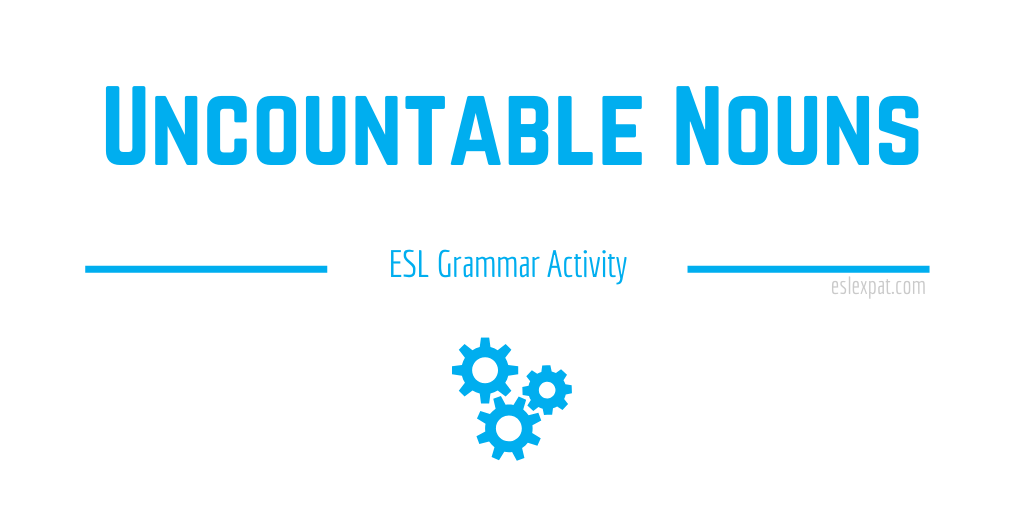|
Download ESL Books + Free PDFs
Save 25% on ESL Books for Teachers & Students Visit the ESL Expat Store and enter "SAVE25" at checkout! |
This activity focuses on helping students identify and use uncountable nouns correctly. By distinguishing between countable and uncountable nouns, students will learn how to discuss quantities, use appropriate quantifiers, and avoid common errors.
Student Level: Beginner, Intermediate

Uncountable Nouns ESL Activity Preparation:
Prepare a list of common uncountable nouns, such as “water,” “sugar,” “information,” and “advice,” as well as a few example sentences that demonstrate their usage. Additionally, gather a few images or objects that represent both countable (e.g., “apple,” “pencil”) and uncountable (e.g., “milk,” “money”) nouns to visually reinforce the differences.
Print a worksheet or display a series of sentences with blanks where students need to choose appropriate quantifiers, such as “a little,” “some,” or “a piece of,” to complete each sentence.
Uncountable Nouns ESL Activity Guidelines:
Start by explaining the concept of uncountable nouns and how they differ from countable nouns. Highlight that uncountable nouns usually refer to substances, abstract ideas, or mass nouns that cannot be counted individually, like “sand,” “music,” and “furniture.”
Explain that these nouns do not have plural forms, so we don’t add an “-s” to make them plural. For example, instead of saying “two milks,” we use quantifiers like “some milk” or “a glass of milk.”
Divide students into pairs or small groups and hand out the worksheet with example sentences and missing quantifiers. Each sentence will contain an uncountable noun, and students must fill in the blank with an appropriate quantifier. For example, they may see sentences like, “Can I have ___ water?” or “She gave me ___ advice.” The correct answers would be “some water” and “a piece of advice.”
This exercise encourages students to consider each noun and choose quantifiers suited to uncountable nouns, reinforcing their understanding of the grammatical structure.
As students work, circulate around the room to provide guidance and answer questions, especially where they may struggle with certain nouns. For instance, if students ask why “milk” is uncountable, you can explain that although we can count containers of milk (like bottles or glasses), the substance itself is viewed as a whole.
After students complete the worksheet, bring the class together to review the answers, inviting students to read their sentences and explain the quantifier choice they made. This discussion helps reinforce the idea that uncountable nouns often need quantifiers and provides an opportunity to clarify any misunderstandings.
Follow-Up ESL Activities:
For additional practice, have students write a short paragraph describing a recent trip to the grocery store, using uncountable nouns to discuss things they “bought,” like “some rice,” “a bit of cheese,” or “a bottle of juice.” For oral practice, arrange a conversation activity where students describe a favorite recipe, using uncountable nouns and appropriate quantifiers to talk about ingredients.
If time remains, try a fun vocabulary extension activity like No Harm No Vowel to conclude the lesson.
More ESL Grammar Activities for Kids and Adults:
- Conditional Sentences
- Passive Voice
- Contractions
- Pronouns
- Adverbs
- Adjectives
- Prepositions
- Article Usage

